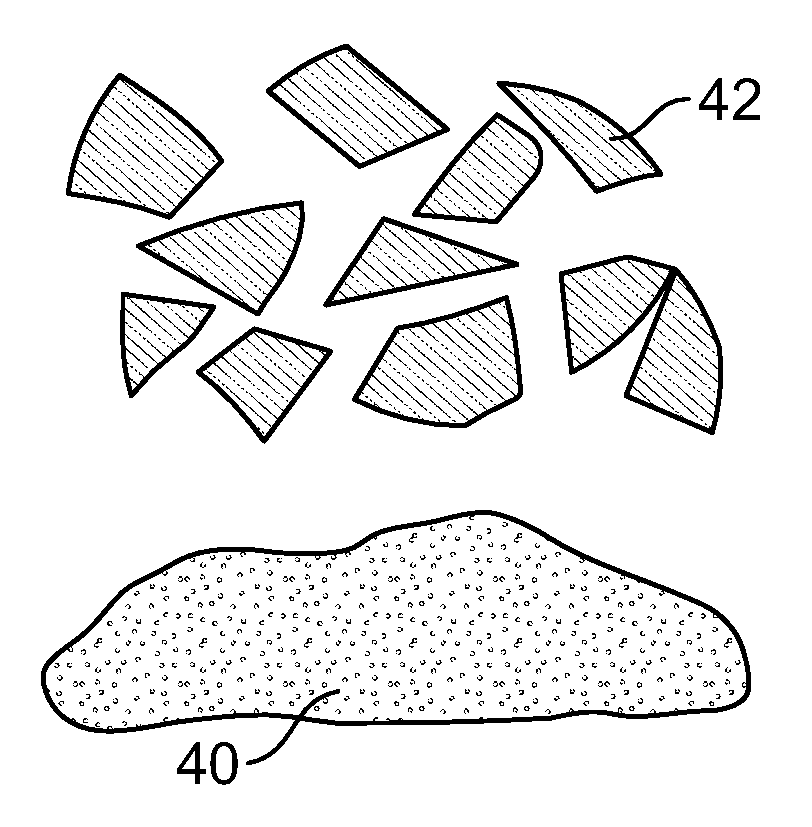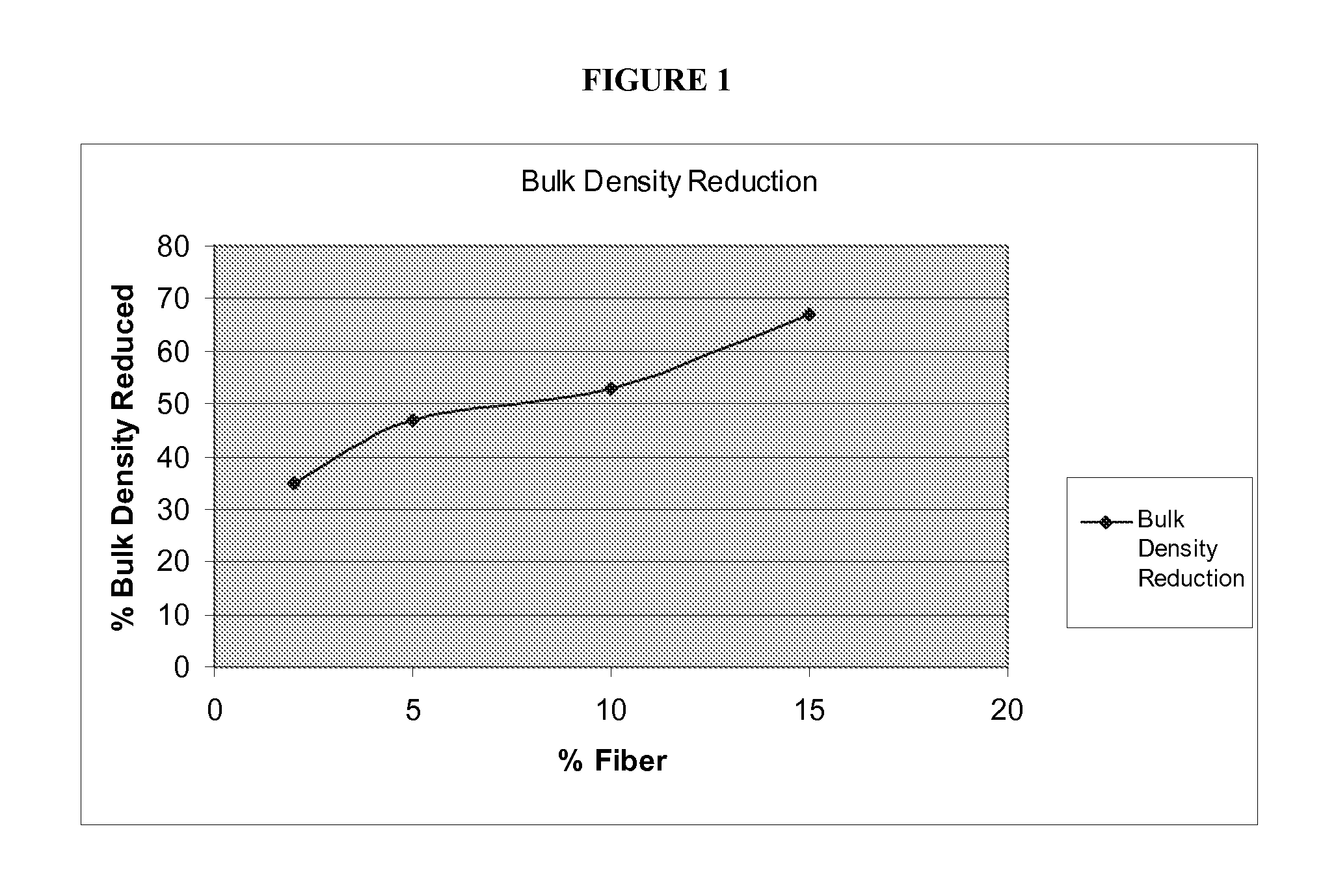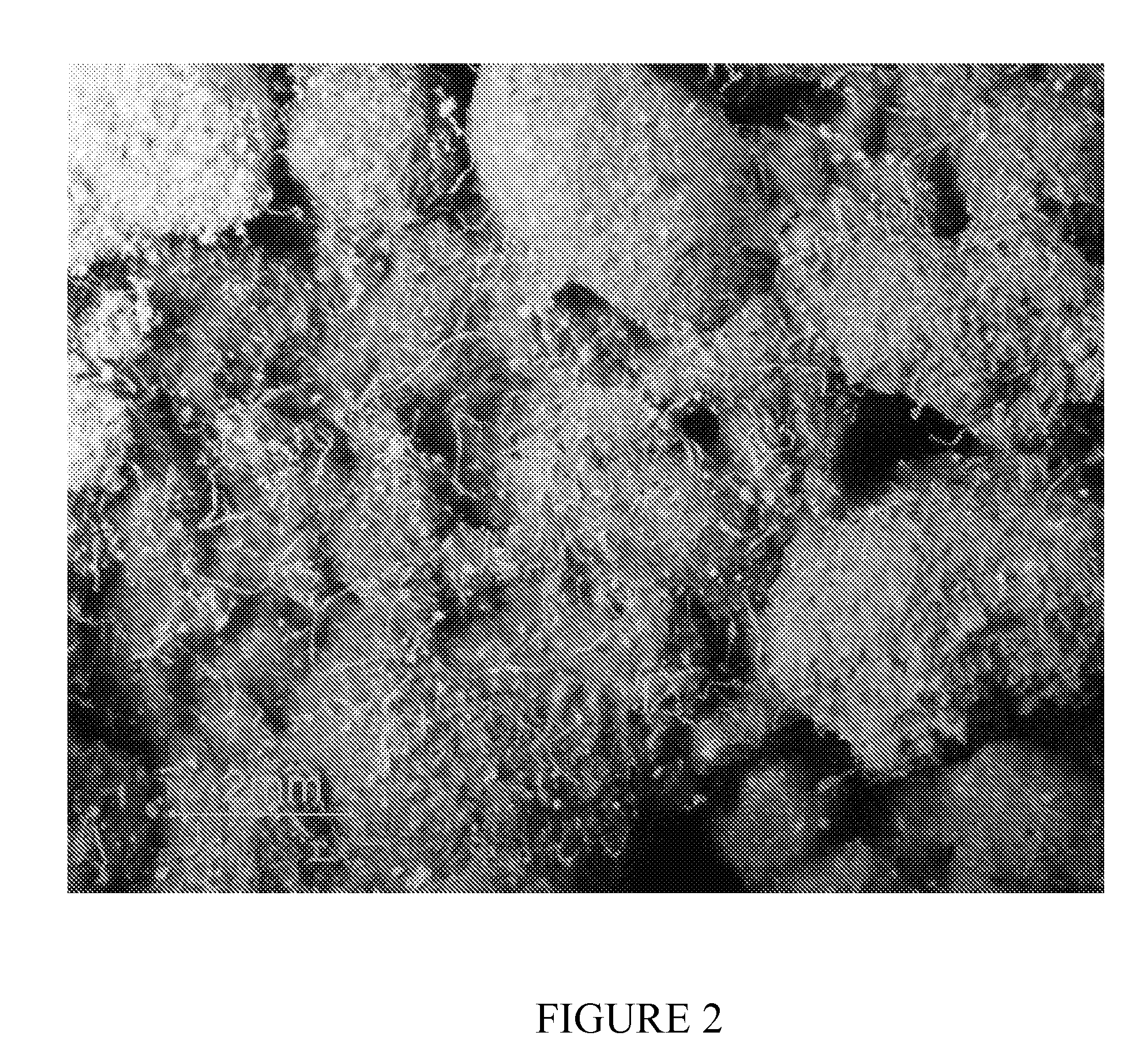Clumping Animal Litter
a technology of animal litter and clumping, which is applied in the field of clumping animal litter, can solve the problems of litter that breaks, disintegrates, creates dust, or crumbles, and is difficult to clean, and achieves the effects of reducing the number of clumps
- Summary
- Abstract
- Description
- Claims
- Application Information
AI Technical Summary
Benefits of technology
Problems solved by technology
Method used
Image
Examples
examples
[0089]Cellulose fibers in the form of paper fluff were obtained from FEECO, Green Bay, Wis. Sodium bentonite clay was obtained from Black Hills Bentonite, Casper, Wyo. Activated carbon was obtained from Calgon Carbon Corporation, Pittsburgh, Pa. Expanded perlite (bulk density 5 lb / ft3) was obtained from Kansas Minerals, Mancato, Kans.
[0090]Fibers were added to a sodium bentonite clay litter material to access what effect the addition of the fibers had on the litter composition's properties such as absorptivity, clump strength and odor control. The fibers were added in a manner such that a homogeneous mixture of fibers and absorbent material resulted.
[0091]Cat urine was obtained from several cats so it is not cat specific.
experiment 1
[0092]Cellulose fibers (2-3 mm) were added to sodium bentonite clay (about 100-500 mesh) in a pilot plant scale pin mixer equipped with a rotary drier to form composite particles. The particles were then sieve-screened to approximately 12×40 mesh and 6×40 mesh in size. The cellulose fibers were added at 0%, 4%, and 6% levels. Each sample depicted in the tables below represents six clumps. Three of the six clumps were formed by dosing the litter composition with 10 ml of cat urine and waiting 2 hours. The remaining three of the six clumps were formed by dosing the litter compositions with 10 ml of cat urine, waiting 1 hour, then redosing with an additional 10 ml of cat urine and waiting an additional 1 hour. All six clumps were then shaken lightly for 5 seconds. The clumps were pancake-shaped and sticky to the scoop and to the touch.
[0093]Table I summarizes the average size, shape and strength of the clumps.
TABLE IAvg. ClumpAvg. LongestAvg. ShortestAvg. HeightStrengthSampleLength (mm...
experiment 2
[0094]Cellulose fibers were added to sodium bentonite clay in a pilot plant scale pin mixer equipped with a rotary drier to form composite particles. The cellulose fibers were added at 0%, 4%, and 6% levels. The composite particles were then blended with non-agglomerated bentonite clay and sieve-screened to 12×40 mesh to form a litter composition comprised of a composite blend (i.e., about 35% composite particles: about 65% bentonite clay). Each sample represents the average of three clumps formed by dosing the litter compositions with 10 ml of cat urine and waiting 2 hours (single dose) or the average of three clumps formed by dosing the litter compositions with 10 ml of cat urine, waiting 1 hour, redosing the clumps with an additional 10 ml of cat urine and waiting an additional 1 hour. Longest length, shortest length and height measurements were taken without disturbing the clumps in the box.
[0095]In addition to the clump size, the clump strength was also measured, i.e., the abil...
PUM
| Property | Measurement | Unit |
|---|---|---|
| density | aaaaa | aaaaa |
| diameter aspect ratio | aaaaa | aaaaa |
| particle size | aaaaa | aaaaa |
Abstract
Description
Claims
Application Information
 Login to View More
Login to View More - R&D
- Intellectual Property
- Life Sciences
- Materials
- Tech Scout
- Unparalleled Data Quality
- Higher Quality Content
- 60% Fewer Hallucinations
Browse by: Latest US Patents, China's latest patents, Technical Efficacy Thesaurus, Application Domain, Technology Topic, Popular Technical Reports.
© 2025 PatSnap. All rights reserved.Legal|Privacy policy|Modern Slavery Act Transparency Statement|Sitemap|About US| Contact US: help@patsnap.com



